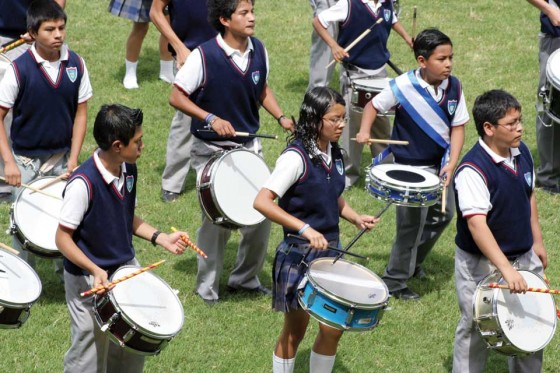Drums
Loud, proud bass drumbeats in school parades; sad, slow beats of mourning in funeral processions; rapid, staccato snare drum ruffles accompanying glockenspiel chimes: Drums are part of human culture worldwide, but Guatemalan drumbeating is especially vigorous, more than ever in this month of patriotic celebrations.
Archaeologists have uncovered many pieces of unadorned drums in digs into the oldest of Mayan lower-class housing sites. More elegantly decorated drums are depicted on many pre-Classic Maya pots and murals. Simple tambor beats continue millenniums later in traditional Mayan ceremonies. Drumming is within our souls, the infant beating with his spoon, the executive drumming fingers on the desk at boring meetings. However, those beats in the school parades are drums you really feel, waves of sound from dozens of big bass drums marching down the town’s narrow streets and echoing off the stucco walls.
Most schools throughout the country have drum-and-bugle corps—well, really they’re drum-and-glockenspiel marchers, maybe with one or two wind instruments. The metallic notes from vigorous student glockenspiel players are a steel version of the wooden tones from the country’s traditional marimbas. Watch the school troops practice along the streets, then watch them march proudly in independence celebrations. The shortest, smallest glockenspiel player-pounder seems to get the loudest sound out, though never enough to overpower the rows of enthusiastic snare drummers and bass beaters.
Enjoy the sound—and the feel—of all the drums of Guatemala, through schoolhouse windows in practice sessions, sweeping past you in parades, thumping in village ceremonies. Every day is drum time around here.
